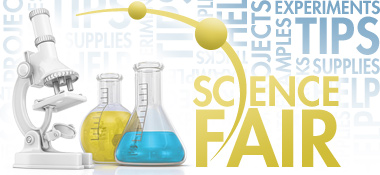Science Fair 911 – Tips for Teachers
 By Guest Blogger Debbie Leibold
By Guest Blogger Debbie Leibold
So, you’re about to assign science fair projects to your students… now what? No need to worry, the Spangler Science team has some tips to make the science fair fun, interesting, and educational for your students (and easier for you)!
- First and foremost, if you are excited about the science fair, your students are sure to share your enthusiasm. Making science an integral part of your classroom throughout the year will help ignite students’ interest during science fair season.
- Consider modeling a science fair experiment for the class. By doing so, your students will see firsthand how to come up with a hypothesis, create some tests to see the effect of a variable, and learn the difference between a demonstration and an experiment. If your class science fair project was going on around the same time that your students were working on their own projects at home, the gathering of data, making charts and graphs, and developing conclusions that you do as a class would be great practice for your students as they work on their individual projects. As we all know, practice makes perfect in any sport, musical instrument, job, etc., so why not practice a science fair project before you actually ask kids to do one on their own?
- Be sure to create a timeline for science fair projects and effectively follow that timeline to completion. Most projects are assigned months in advance of the actual due date, so remember to keep students on pace to complete their projects within the timeline.
- Effective communication with parents will certainly help ensure timely completion of projects and quality work from your students. Be sure to send a letter home with your students when you begin the science fair process and follow up with parents on the progress of their children’s projects along the way. It might be helpful to include a description of the difference between a science demonstration and an actual science fair project and the importance of a variable. Many parents have little to no science background and are truly afraid of the science fair. The more you can help them understand the process and the components of a good science fair project, the better the final projects will be.
- Follow up with your students as they work on their individual science fair projects. Make sure their topic is narrow or specific enough, that they have a question they can answer by running some tests, that they have a variable (meaning their experiment is not just a demonstration), and that they have a way to gather data and document their results. A little feedback early on in the process will make for more engaging and higher quality experiments and a more successful science fair.
Creating a grading/ judging rubric will ensure that every project is assessed equally and on the same criteria. Your rubric should address areas such as:
- Creativity of question
- Effectiveness of experiment to prove/disprove hypothesis
- Clarity of presentation
- Depth of research
- Appropriate use of scientific method
You might also consider adding a checklist for the science fair display board. This checklist helps your students remember all the sections they need to include in their experiment and will help you as the teacher make sure the scientific method has been followed. The display board checklist should include the following:
- Question– What are you trying to find out?
- Hypothesis– What do you predict will happen?
- List of Materials– What supplies did you use in your experiment?
- Procedures– What steps did you take to run your tests?
- Data– What photos, charts, and/or graphs did you include to show your results?
- Observations/Discoveries– What actually happened? Explain your results.
- Conclusion– ”So What?” What did you learn? Was your hypothesis correct?
All projects should also include the following:
- Standardized testing conditions (as much as possible)
- A control—something that stays the same in your experiment
- At least one variable—something that changes in your experiment
- Multiple tests to show comparisons between the control and the variable
- Technology integration—Excel spreadsheet, chart, graph, Power Point presentation, internet research, blog, etc.
Once you’ve created a rubric and a checklist, share it with your students and their parents as they begin their science fair projects. Don’t wait to give it to them until the end. Having the requirements in front of them at the start will ensure that the final projects do what they are supposed to do!
At Steve Spangler Science, we know that all schools and science fairs have different requirements and, as students get older, the requirements change and get much more elaborate. The science fair information on our site is meant to be a starting point and a source of ideas. Adapt our format and our suggestions to what works for you and your science fair.
You know your students’ strengths and weaknesses as well as their interests and passions. If you are able to help your students find a project that is meaningful for them and then provide the scientific support they need to complete the project, your students will be excited about the science fair and, more importantly, excited to share their discoveries with others.




Leave a Reply
Want to join the discussion?Feel free to contribute!